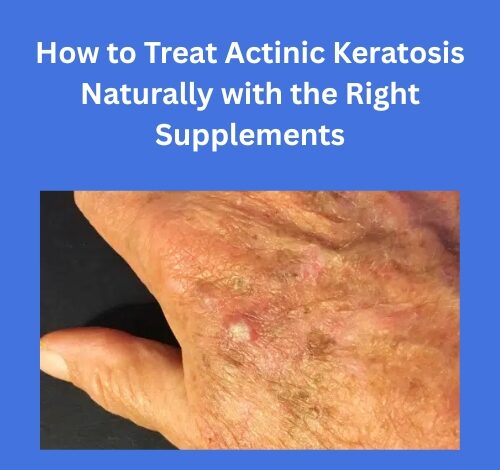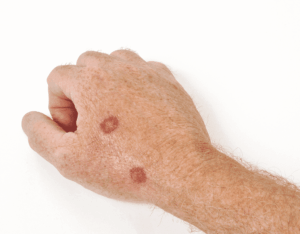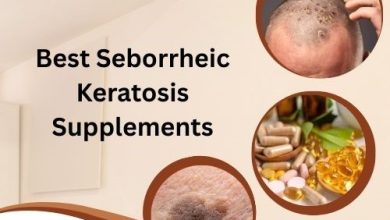How to Treat Actinic Keratosis Naturally with the Right Supplements

Actinic Keratosis is a skin condition that results from long-term exposure to ultraviolet (UV) rays, usually from the sun or tanning beds. It often appears as rough, scaly patches on sun-exposed areas like the face, ears, scalp, neck, and hands. While actinic keratosis is considered a precancerous condition, early intervention can prevent it from developing into squamous cell carcinoma—a type of skin cancer.
Conventional treatments such as cryotherapy, laser therapy, or topical medications are commonly used, but many people are exploring natural ways to support skin healing. This includes the use of dietary and Herbal Treatment for Actinic Keratosis to nourish the skin and boost the body’s natural defenses.
How to treat actinic keratosis naturally with the right supplements, focusing on the benefits of using a herbal supplement for actinic keratosis as part of a holistic skin health plan.
What is Actinic Keratosis?
Actinic Keratosis (AK) is a precancerous skin condition that develops due to long-term exposure to ultraviolet (UV) radiation from the sun or tanning beds. It appears as rough, scaly, or crusty patches on areas of the skin that are frequently exposed to the sun, such as the face, ears, neck, scalp, forearms, and hands.
These patches may vary in color—ranging from skin-toned to red or brown—and are often easier to feel than see. While they may be small and painless, actinic keratoses can sometimes itch, burn, or become irritated.

Key Characteristics of Actinic Keratosis:
- Dry, scaly, or crusted spots
- Common on sun-exposed skin
- May feel like sandpaper
- Can be flat or slightly raised
- Often appear in clusters
Why Is Actinic Keratosis a Concern?
Actinic keratosis is considered precancerous because if left untreated, it can develop into squamous cell carcinoma (SCC)—a type of skin cancer. This makes early detection and proper treatment very important.
How to Treat Actinic Keratosis Naturally
Actinic Keratosis (AK) is a skin condition caused by long-term exposure to ultraviolet (UV) radiation from the sun or tanning beds. It typically appears as rough, scaly patches on sun-exposed areas like the face, scalp, ears, neck, and hands. Because actinic keratosis is considered precancerous, it’s important to address it early.
While medical treatments like cryotherapy and topical creams are often necessary, many people also explore natural ways to support skin healing and prevent further damage. Here’s how you can approach actinic keratosis naturally, using lifestyle changes, skin care practices, and supplements.
1. Use Natural Sun Protection
The most important step in treating and preventing actinic keratosis naturally is protecting your skin from further UV damage:
- Wear broad-spectrum sunscreen (SPF 30 or higher) daily
- Avoid sun exposure during peak hours (10 AM to 4 PM)
- Wear protective clothing, hats, and sunglasses
2. Adopt an Antioxidant-Rich Diet
A diet full of antioxidants can help fight oxidative stress and support skin repair:
- Eat plenty of colorful fruits and vegetables (berries, spinach, kale, carrots)
- Include healthy fats like olive oil, avocados, and nuts
- Drink green tea, which contains powerful compounds like EGCG
3. Try Herbal Supplements for Skin Health
Several Buy Best Herbal Supplements Products and Natural Remedies may help nourish the skin and support healing. These include:
- Green Tea Extract – Contains EGCG, which protects skin cells from UV damage
- Milk Thistle (Silymarin) – A natural liver detoxifier that also supports skin clarity
- Curcumin (from Turmeric) – Reduces inflammation and oxidative stress
- Aloe Vera – Soothes irritated skin and promotes healing
- Omega-3 Fatty Acids – Found in flaxseed and fish oil, these help reduce skin inflammation
Always consult with a healthcare provider before starting any new supplement, especially if you are on medication or have other health conditions.
4. Apply Natural Topicals
Certain natural topical treatments may help reduce irritation and support healing:
- Aloe Vera gel – Cools and hydrates damaged skin
- Green tea compresses – May help calm inflammation
- Vitamin E oil – Helps moisturize and repair dry, scaly patches
These remedies can be used alongside medical treatments but should not replace them.
5. Stay Hydrated and Maintain Skin Hygiene
Keeping your body and skin hydrated helps support the healing process:
- Drink plenty of water
- Use a gentle, natural moisturizer
- Avoid harsh soaps or exfoliants that can irritate the skin
Natural Treatment for Actinic Keratosis
Natural treatment does not mean ignoring medical advice. Instead, it involves supporting your body with nutrition, lifestyle changes, and targeted supplements that promote skin healing, reduce inflammation, and fight oxidative stress. These approaches can be used alongside conventional treatments or as preventive care under medical supervision.
Lifestyle Tips to Enhance Natural Healing
- Wear SPF daily to protect against further sun damage
- Stay hydrated to support skin function
- Eat an antioxidant-rich diet (fruits, vegetables, healthy fats)
- Avoid tanning beds and limit sun exposure during peak hours
- Do regular skin checks to monitor for changes
Final Thoughts
While Actinic Keratosis should be evaluated and treated by a dermatologist, using the right natural supplements can support your skin’s ability to heal and resist further damage. A carefully selected Herbal Supplement for Actinic Keratosis may help manage symptoms, reduce inflammation, and enhance your overall skin resilience.
Remember, natural remedies are best used in combination with medical guidance. Talk to your healthcare provider before starting any new supplement regimen, especially if you have existing health conditions or are undergoing treatment




